
Motorcycle Investor mag

Dive Bombers
(by Guy 'Guido' Allen, May 2019)
Fabulous motorcycles and fabulous losses – is that how it works? We rate the depreciation world champs
This is a vexed question, and maybe you should close your eyes and turn several pages if you’re on the cusp of buying a new motorcycle. Particularly something high-end or exotic. Otherwise this may end in tears…
Okay, only the strong or the fabulously wealthy should be left.
It should come as no surprise that your shiny new toy loses value pretty much from the time you roll it out of the showroom. Which is fine. We’re among adults and that’s what happens with new vehicles.
You’re paying to have the latest and greatest, or the reassurance that no-one other than its maker has messed with it. Which is fair enough. We get it. This is a peculiar joy that we should all experience at least once.
The consequences are of course that you (or someone) loses scads of money over time. With very rare exceptions, this is the cost of the game we play and the only thing that varies is the sheer size and speed of the loss. Sometimes it’s truly spectacular.
We’re talking dive-bombers here – the machines whose new price is now but a distant memory.
Now the good news is there’s nothing stopping you going out and taking advantage of this, by reaping the rewards of someone else’s frivolity, their spendthrift ways, and buying some transport of delight for a small fraction of its original cost. And still get all the fun of riding it.
We’ve picked out some of the world champion models – those that may have lost a motza but are still a good thing to own. While we’re at it, we look at their new prices, what they are adjusted for inflation – using the Reserve Bank online calculator – and what they’re now fetching.
It’s a wild old ride, so strap yourself in…

Sports – Ducati 999, 2003-on
You have to wonder whether Ducati could ever have anticipated the hornet’s nest of criticism it copped when the Pierre Terblanche-designed 999 series was launched, back in 2003. Really, the company was on a hiding to nothing – it was on a mission to replace what was regarded as one of the most beautiful motorcycles ever made.
The Massimo Tamburini 916-998 series that went before had to be replaced eventually, because not having new product in this market is also a slow death.
Sure, Ducati might have anticipated some kickback, but my recollection is that the company was truly staggered by the vehemence of the negative response and the sluggish sales.
Was it really ugly? It was certainly different to its predecessor, losing the feminine curves and gaining a more industrial look. Here's another thing, the styling has grown on people over time now that we're well and truly over the initial shock.
The truly unfair part of all this was the 999 was unquestionably a better motorcycle from just about any point of view. First impressions were positive – hop aboard and it was more comfortable than a 916. Not much of a challenge, really, and still no lounge chair. However there was more legroom and a great deal of adjustability built into it.
As a package it was quicker-steering without being unstable and generally more responsive. The 999 engine was a development of its predecessor, rather than a replacement, claiming a pretty healthy 126 horses in stock form, a few more neddies for the S, and more like 140 horses for the R.
The real claim to fame for the S was uprated Ohlins suspension (versus Marzocchi/Sachs on the standard) and lighter wheels.
They all gained upgrades in the second-gen 2005 series with the stocker going to 140 horses and the R claiming more like 150.
To counteract the grizzles about the styling, the series was successful in world superbike, winning three titles.
However, the used bike market has not been kind to them. Respectable stockers, which were sold new at around $28,000, seem to be available from $12,000 and up, depending on mileage. Monopostos will cost more, while an S commands (then sold at low-30s) a small premium.
As for R versions, they’re thin on the ground. However a bike that once would have cost you $54,000 is now more like mid-20s in very good used condition.
In this group, I reckon the S represents the best value, given the worthwhile chassis upgrades.
Cost new in 2003 (standard): $28,500
2003 cost adjusted for inflation: $40,100 (Reserve Bank)
Used value today: $13-15,000
Honourable mention:
Aprilia RSV1000 Mille
$25,700 new from 1999, from $7000 now
See the story on our 916 here: Quarter century seduction

Heavy touring - HD FLHT Electra Glide 1340 series, 1996-on
Let’s stick our neck out here: I reckon the Electra Glide series of this era is one of the most underestimated motorcycles on the planet – outside the USA, that is. And the funny thing is, as time goes on, they make more and more sense.
Let me explain. Our American cousins across the Pacific may struggle to design and sell sports bikes for any length of time, but they definitely ‘get’ cruisers. Really, they can take credit for more or less inventing them.
Now if you’ve ridden a big American touring motorcycle designed any time in the last 70 years (yes, I’m serious) you’ll find they all have one thing in common: long wheelbase, big lazy V-twin and a roomy seating position. No rocket science.
While there have been countless incremental improvements over the decades, and a 2018 heavy cruiser is a much easier proposition to ride than a 1948 model, the general concept is unchanged.
Move all the way up to 1998 or there-abouts and you’re getting a fairly modern experience for a fraction of the current cost, or what the proud first owner forked over.
That, in a round about way, brings us to the 1996-98 Harley-Davidson FLHT Electra Glide. It may be 20 years old, but it’s still capable of delivering a decent ride.
This is late in the life of the Evolution engine series, which from the mid-1980s helped bring H-D back from the brink of bankruptcy and has proven to be notoriously tough and reliable. That’s particularly the case in a ’Glide, as owners tend not to heavily modify the touring bikes.
The engine is simplicity itself: single carburetor, hydraulic valve lash adjustment, and it claims around 67 horses in stock form. Not a lot, but enough to do the job – particularly since most have a little more, thanks to breathing mods.
We’re not talking brilliant handling, but they’re predictable. Rough mid-corner sections can unsettle things, but they self-centre pretty well. By this stage H-D was also putting some decent brakes on the tourers.
Their big claim to fame is the creature comforts: sound system, cruise control, good seating and decent luggage. They are in fact particularly good things to travel on, so long as you’re not in a screaming hurry. Add in an historic nameplate, and I reckon you get a lot of motorcycle for the $10-12k spend.
Cost new in 1996: $21,500
1996 cost adjusted for inflation: $35,800 (Reserve Bank)
Used value today: $10,000-12,000
Honourable mention:
Honda GL1800 first generation
$38,000 new from 2001, $10-15,000 now
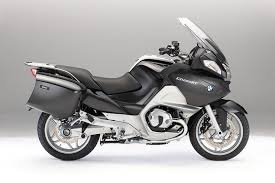
Medium touring – BMW R1200RT, 2005-on
If the whole heavy tourer category is just too much to cope with, there are alternatives and this is an area where, over the years, BMW has excelled.
Really, the boxer twins have been the champions of the line-up if you want something that doesn’t feel like a barge, but has space and some halfway reasonable performance.
One of the issues for the uninitiated is sorting out one generation from another. In the case of the later model RTs, none of them are lookers – whoever penned the lines for 1150 through to 1200 series (there were a few) clearly wore a Captain Practical cape to work.
What we’re looking for is the 2005-2009 series – or the first-gen R1200RT. What made these special was the resources the parent company threw at getting the weight down and the performance up, even though we only went from a nominal 1150 to 1200 engine capacity. Really, the company’s target for all this attention was the all-important GS adventure series, but the tourers got the benefit as well.
You copped something that was a little more ‘together’ in the handling department, with a massive weight drop. On that last score, we’re talking around 26 kilos – so a juiced-up 1200 now weighed the same as a dry 1150.
Just as significant was the power lift to 110 horses claimed – enough to make this feel like a genuinely fast motorcycle. Make no mistake, with ABS on most, this is a very quick and capable point-to-point motorcycle, with a massive touring range thanks to the 27 litre fuel tank.
If you’re in the market for one, just be aware of what you’re buying. There are several police bikes in the fleet – not such a terrible thing, but resale value tends to be lower – and the specs can vary hugely from one motorcycle to another. Items such as cruise, electronic suspension adjustment (ESA) and even ABS will sometimes be absent.
Prices are low for a relatively young model. Something with around 60,000-ish kays on board can be had for around $10,000 (big mileage bikes can be half that!).
Cost new in 2005: $27,500
2005 cost adjusted for inflation: $36,800 (Reserve Bank)
Used value today: @$10,000 depending on condition
Honourable mention:
Honda ST1300
$23,000 new from 2003, @$9000 for a good one now

Power cruiser – Triumph Rocket III, 2004-on
It’s a long time ago now, so I guess we can talk about it. Once upon a time, say nearly 25 years ago, a Triumph staffer in the UK showed me a rough drawing labeled ‘T-Max’. Very cheeky given Yamaha’s V-Max brand, but an indicator that the whole power cruiser market sector was on the company’s mind even back in those early days of the revived Hinckley factory.
Why? Well the proverbial golden fleece for the British maker has long been the American market, which in the modern era means cruisers. Now you could do what everyone else has tried, and come up with a V-twin series to keep the mighty Harley-Davidson on its corporate toes. However that didn’t sit so well with the Triumph image, where something a little out-there like a an inline triple certainly did.
In the end the recipe combined two key ingredients: an historic name in the shape of Rocket III (an old BSA plate that had ties in the USA) with a nod to that good old adage – there ain’t no substitute for cubic inches. Yep, Triumph launched the world’s largest capacity production motorcycle engine. (And no, I’m not counting V8 car-engined bikes…)
You had to admire the sheer cheek of the concept, not to mention some pretty convincing execution. In keeping with the audacity of the project, the company launched a very funny YouTube video, taking the mickey out of the development process. It's called ‘The Triumph Rocket III manufacturing process’.
As for the motorcycle, it was impressive. A claimed 147 horses – double the output of many cruisers – with a stump-pulling max torque figure that chimed in at 2000rpm made it a pretty special thing to launch away from the lights.
A massive 240 section rear tyre looked impressive but somehow defied handling logic, as the first versions tended to bump steer from the rear. However there was no doubting you scored ultimate bragging rights and motorcycling’s equivalent of a ready-made hotrod.
Weirdly, it didn’t catch the imagination of the USA market – not to the extent that Triumph might have hoped. Despite that, they remain among the quickest cruisers and today offer a hell of a lot of bang for your buck, with some outrageous possibilities for the courageous modifier.
Most of them seem to be languishing around the $10-12k mark at the moment.
Cost new in 2004: $24,000
2004 cost adjusted for inflation: $33,000 (Reserve Bank)
Used value today: $10-12,000
Honourable mention:
Suzuki Boulevard M109R
$19,000 new from 2006, @ $10,000 now
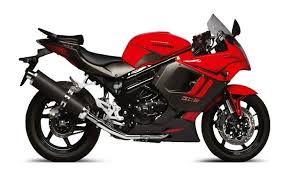
Learner – Hyosung GT650R, 2005-on
There was more than a little curiosity surrounding the launch of Hyosung into the local market. Fellow Korean brand Hyundai had proven that there was a ready appetite for product from that part of the world, particularly if the price was right. Oh, and there was no doubt the Korean manufacturing sector knew a thing or two about producing high-end equipment.
Hyosung’s claim to fame at the time, with the 250 and 650 V-twins, was that it had been producing similar engines for Suzuki and therefore was a trusted supplier. However these machines were not at the same level of finish and sophistication as something like the SV650 series.
Performance was decent, handling okay, but it was clear that not quite as much development experience had gone into the product. That wasn’t necessarily an issue so long as it remained cost-competitive.
The GT650 was the sports-touring flagship of the range and stacked up pretty well. However Hysosung over recent times has quietly faded away as a motorcycle brand – certainly in this country. This means that local resale values have dropped and were never that high to start with, given it was a second-tier band.
To be fair to the poor old Hyosung, the losses for the new bike buyer were miniscule compared to some of the high-flyers we’ve looked at. However where an exotic like a 999 Ducati could conceivably stop falling and start to rise in value, some time in the foreseeable future, it’s harder to make that argument for the Hyosung. There probably will be an historic interest in them some time in the future, but it will take longer and the rewards will be lower.
For the time being, they’re entering the realm of being worth a punt if value for money is your primary motivation.
Cost new in 2005: $9400
2005 cost adjusted for inflation: $12,600 (Reserve Bank)
Used value today: $2000-3000
Honourable mention:
Aprilia Pegaso 650ie
$12,500 new from 2001, from $3000 now
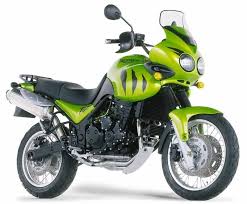
Adventure touring – Triumph 955 Tiger, from 2001
You know how sometimes it can take several goes – some practice - before you get something absolutely right? That’s the situation Triumph Hinckley seemed to be in with its adventure nameplate, the Tiger.
Its first attempt in the mid nineties was the 900, essentially a restyled and retuned version of the T300 package that was the Trident, Speed Triple and Daytona series. The power was pulled back to 80 horses, the suspension fitted with longer legs and the bodywork endowed with the ‘right’ look.
Given the circumstances, it was a pretty good effort and made a fine road bike, particularly when the surface got a bit gnarly. Adventure tourer? Not really.
Take two was the first injected 885, aka the T709, which was better but again didn’t really quite gel. At that stage the company’s product seemed to be going through some growing pains. Then, in 2001, we got the 955, which was a far more confident piece of kit.
The look was improved – I’m still a fan of the wild lime green version – and the bike as a whole fulfilled its purpose better.
With a claimed 105 horses in a not-too-intimidating package, it was very quick on tar and easy enough to handle on made tracks. You’d never mistake it for a dirt bike, but really anything weighing in at anything within cooee of 200 kilos or above has got to have a giant question mark hanging over it in that department.
At risk of getting howled at, the triples have a distinctive character, which added to their charm. Triumph was still some way off being able to compete head to head with BMW’s GS brand, which more or less claimed ownership of the big adventure bike territory. But by charging a couple of grand less and providing a very lively motorcycle that pretty much met the brief for a lot of people, it found a niche.
I reckon these things are a bit of a bargain. They’re still a quick and fun bit of kit, but probably undervalued at the moment.
Cost new in 2001: $15,500
2001 cost adjusted for inflation: $23,100 (Reserve Bank)
Used value today: @ $6000
Honourable mention:
Honda XL1000V Varadero
$15,000 new from 1999, @ $6000 now
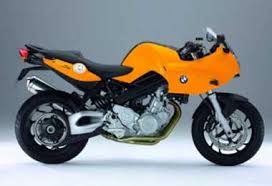
Middleweight all-rounder – BMW F 800 S, circa 2007
This was a curious creation, even for BMW. Admittedly by this stage it had an ongoing engine supply relationship with Rotax, so the 800 twin from that source wasn’t a complete surprise. However the architecture was a little out there – parallel pistons, counterbalanced by a third (albeit minimal) connecting rod with a balance weight.
There were other novelties, such as the underseat fuel tank and single-sided rear swingarm with belt drive.
Really, it was if the maker had gone out of its way to come up with something oddball. Perhaps it did.
In any case the F 800 S performed well, with its claimed 85 horses being quite enough to punt it along at a decent rate. The engine architecture and tuning ensured it was fairly punchy off the bottom end and had a very distinctive growl.
It was bolted into a chassis that worked very well, providing good feedback and decent suspension. Though ABS was very much part of the corporate identity by now, it was optional on this bike, and you could order a pretty high level of spec, including luggage and heated handgrips.
The F 800 appeared at an interesting time for the company, a little before the S 1000 RR series launched and established its sports bike credentials.
Nevertheless the F 800 series was given its own identity, with the company sinking a lot of funding into having world-famous stunt rider Chris Pfeiffer ride and promote them. The message? Look, these things are a lot more than a cut-price Bimmer!
It’s hard to see the parallel twin series earning the same sort of misty-eyed sentimentality garnered by the boxer twin generations the firm has produced over the years, but it did find its own fan club – albeit in modest numbers.
For the time being, they represent an interesting and pretty solid second-hand buy for a fraction of what they cost new.
Cost new in 2006: $14,500
2006 cost adjusted for inflation: $18,700 (Reserve Bank)
Used value today: $3000-5000
Honourable mention:
Triumph Street Triple R
$13,500 new from 2008, @ $7000 now
And another thing…
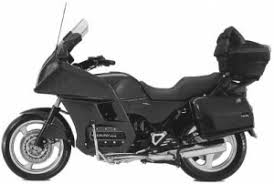
My dive-bomber – 1992 BMW K1100LT
Okay, I may have got a little too wrapped up in this story. While casting around for candidates, I tripped over a 1992 BMW K1100LT for sale, with around 75,000km on the clock (nothing for these things), for $2590. That’s with a roadworthy and a little reg left over.
The catch? A little paint missing here and there, but overall it looked to be in very good shape. I suspect this is one of those bikes the dealer just wanted off the showroom floor.
This model ran the 16-valve head and was very much the flagship of the fleet at the time, with ABS (not working), electric windscreen (working), a full set of hard bags and a sound system (missing).
A steal? The plan is to fly to Brisbane and ride it back to Melbourne, so we’ll soon find out. Wish me luck…
(Ed's postscript: It made the trip just fine, though it ended up needing a clutch and gearbox rebuild. A story for another day...)
Cost new in 1992: $20,300
1992 cost adjusted for inflation: $37,700 (Reserve Bank)
Used value today: $2500-4500
See the on this bike updates here:
Adding an el-cheapo tourer the fleet via a 1700km road trip
Our allegedly cheap tourer heads to the workshop
-------------------------------------------------
Produced by AllMoto 61 400 694 722
Privacy: we do not collect cookies or any other data.


Archives
Contact

